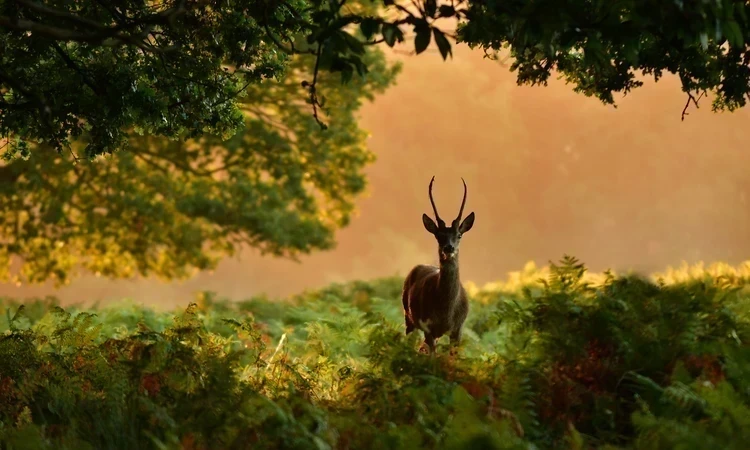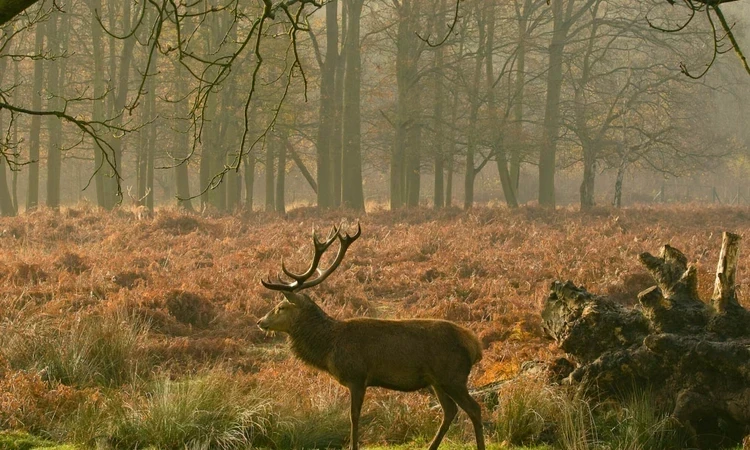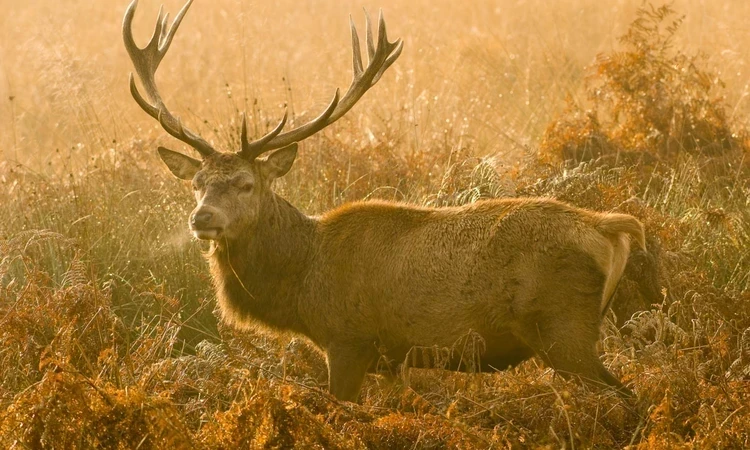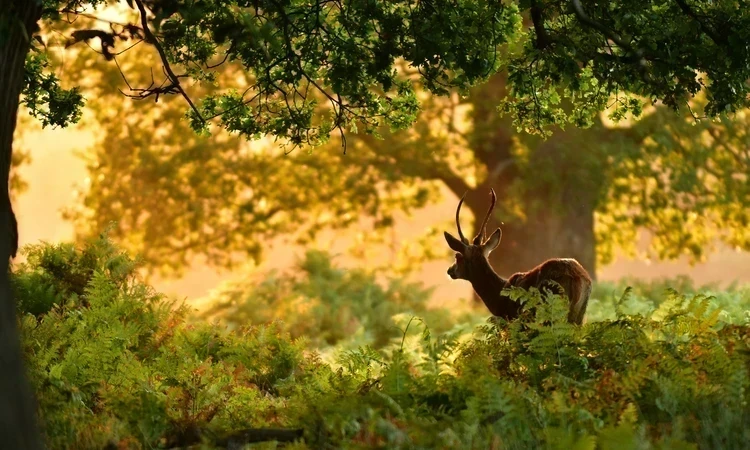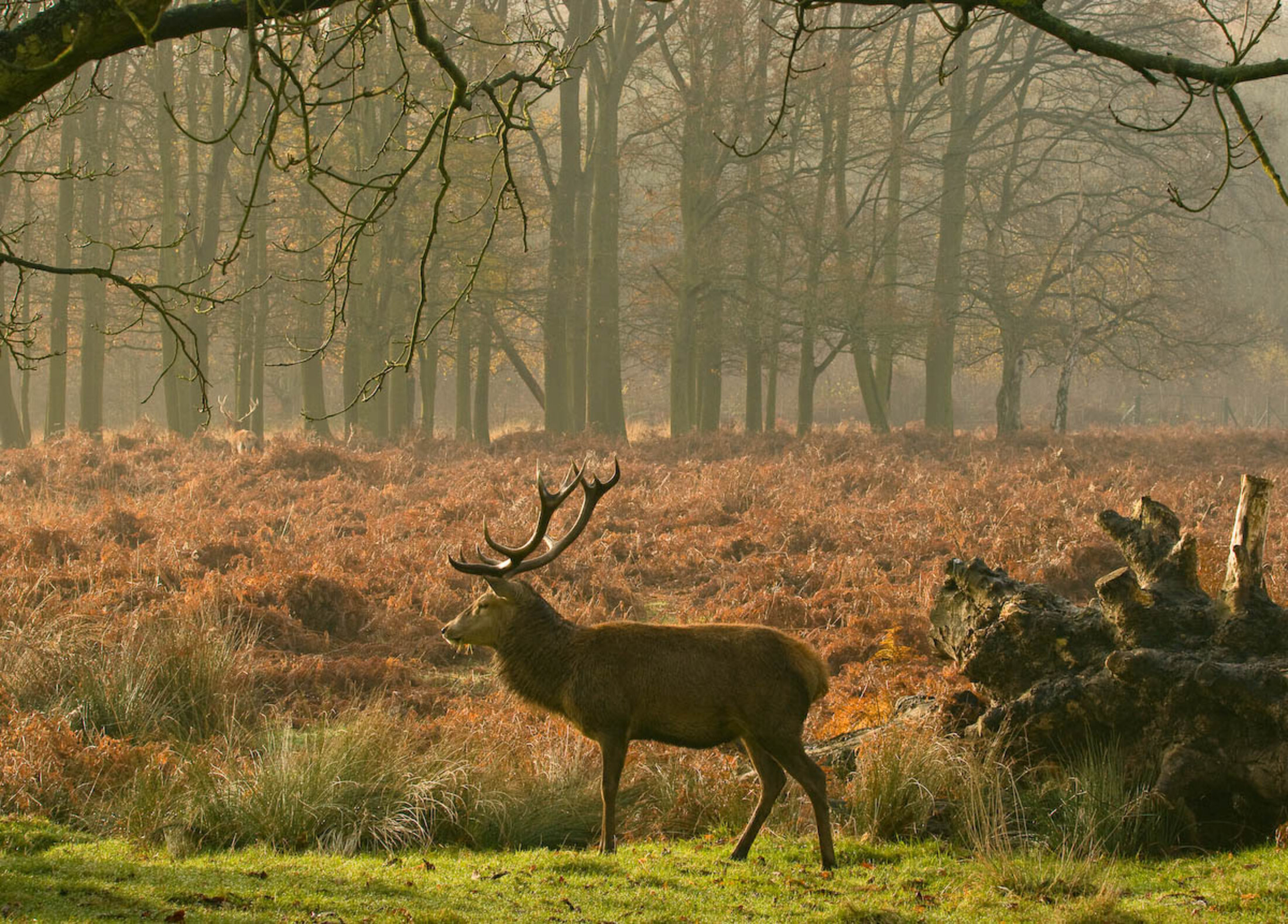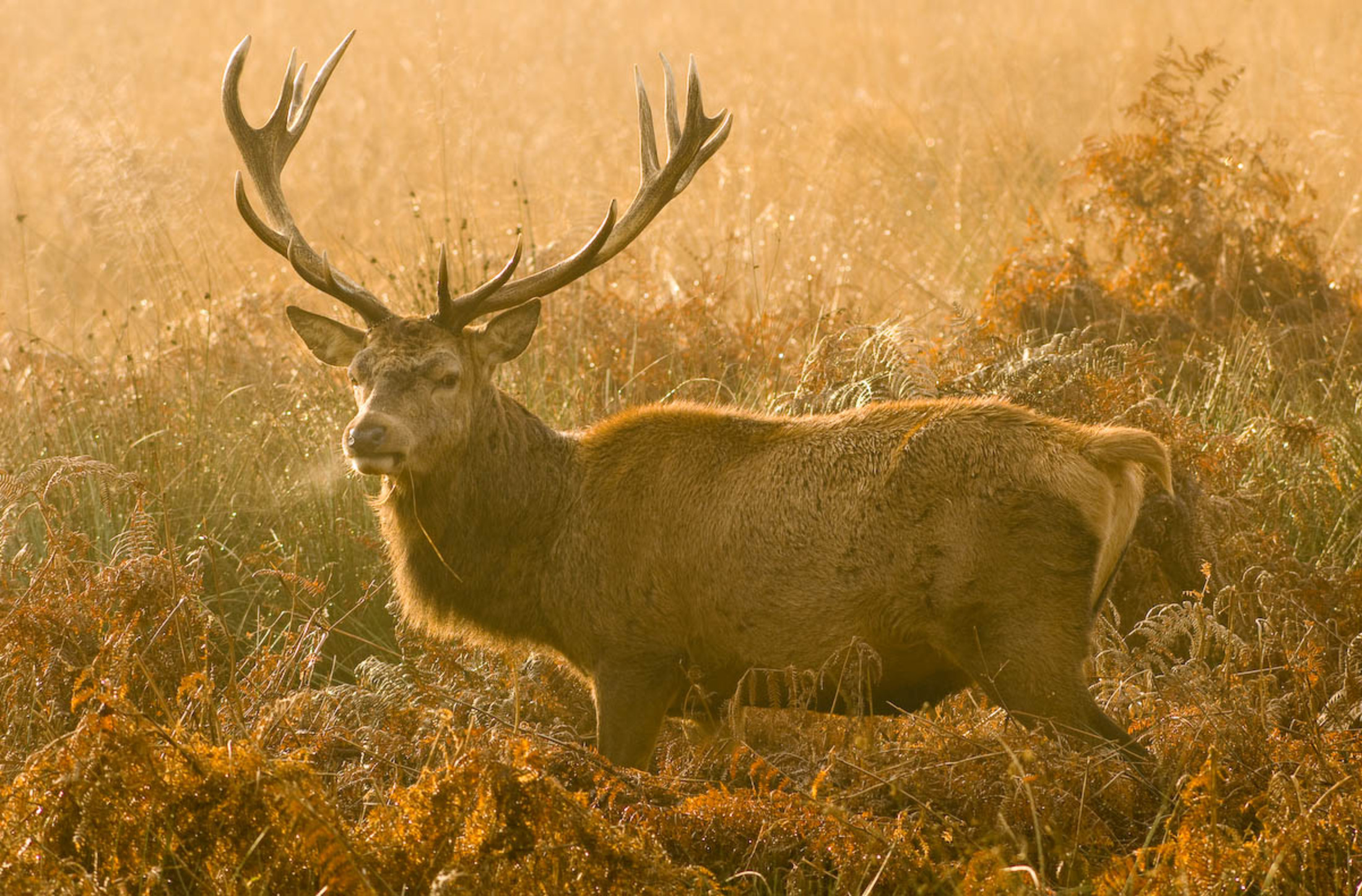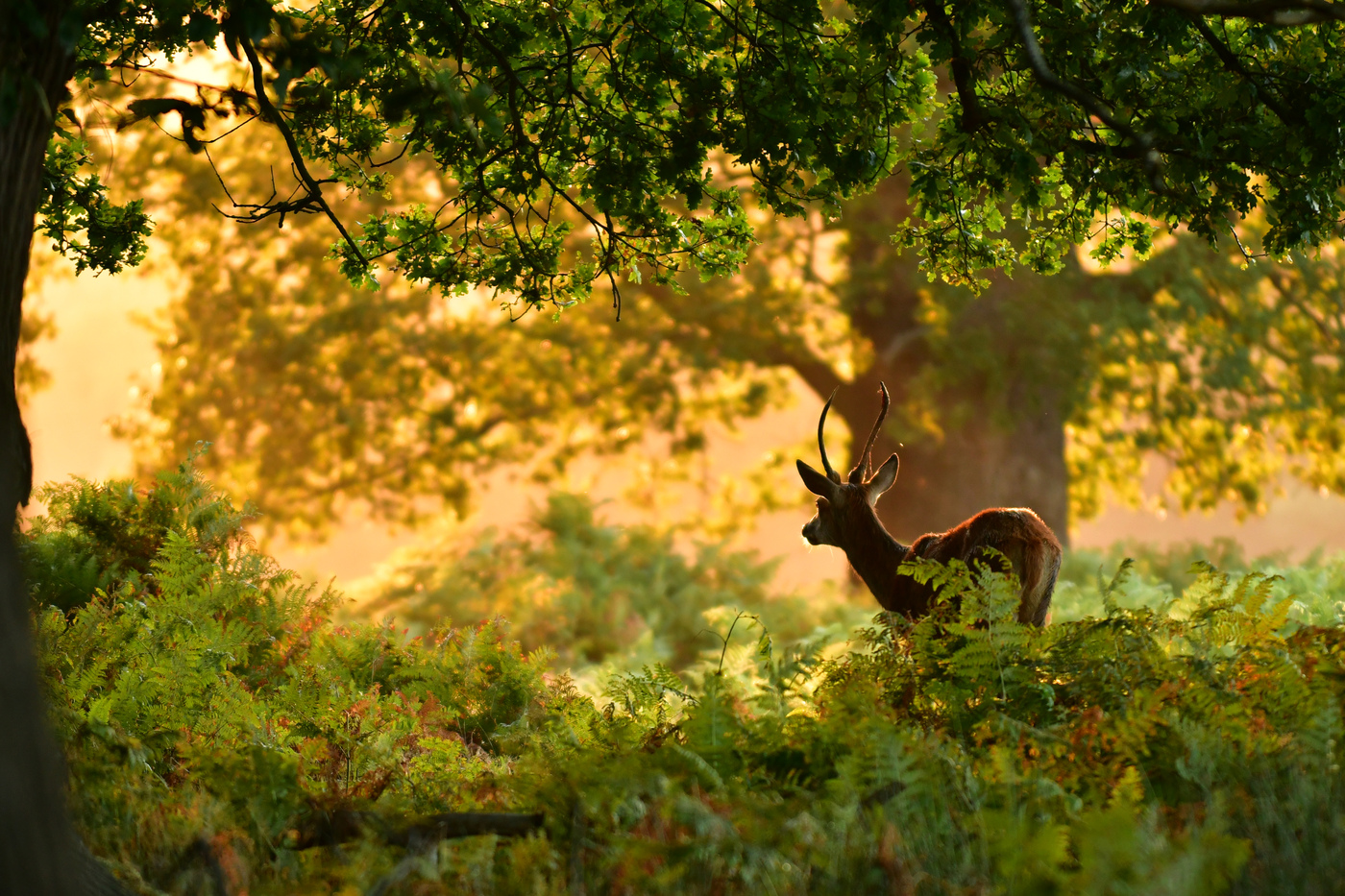
Deer in the Richmond Park
Richmond Park is a National Nature Reserve and home to over 630 red and fallow deer who have been roaming freely since 1637.
Deer herds have played a major role in Richmond Park’s history and have shaped the landscape too.
Red deer are the largest land mammal native to the British Isles and in summer their coats are glossy red. Fallow deer are smaller and their summer coats, usually spotted, vary from a cream to darkish brown colour.
All male deer have antlers which start growing in the spring and are shed each year, usually at the end of winter. Antlers are made of bone which can grow at a rate of up to 2.5cm a day. A soft covering known as velvet helps to protect newly forming antlers. It’s then rubbed off by the male once growth is complete, in time for the rut in September.
Staying safe
Deer are wild and unpredictable animals so for visitors’ safety and the deer’s welfare, we ask that all visitors observe a minimum 50m distance. For more information please see our deer safety advice.
Deer grazing protects the unique landscape of this National Nature Reserve
Without the presence of deer, we would not be able to enjoy the sweeping views of Richmond Park we see today. This is because deer grazing prevents tree seedlings from growing, keeping the grassland open.
Richmond Park’s acid grassland is a nationally important habitat which is protected by law and depends on grazing for its continued survival. Unlike mowing, grazing creates more variation in structure and plant diversity and does not damage the more than 400,000 anthills. You might notice too that parkland trees have a distinctive ‘browse line’ as the deer eat all the leaves and twigs growing below 6ft.
Diet of red and fallow deer
There’s an abundance of natural food in Richmond Park for the deer. They eat grasses, leaves and shoots of trees, as well as acorns, sweet chestnuts and horse chestnuts. Visitors are reminded not to remove conkers (horse chestnuts) from the park as they are a vital part of the diet of deer and are important in building up their fat reserves for winter.
It's illegal to feed deer in Richmond Park, as feeding them can both harm the animals and risk visitor safety. Instead, please help us keep wildlife wild by observing these majestic animals from a distance of at least 50m.
Deer rutting season
The deer mating season, also known as the rut, takes place in the autumn and the red stags and fallow bucks compete for females. The large males roar, bark and clash antlers in an attempt to fight off rivals and attract as many potential mates as possible. It’s extremely important that visitors are particularly vigilant at this time of year and keep as much distance as possible from the deer. Male deer are more likely to attack dogs at this time of year, as the stags and bucks are pumped full of testosterone and can be highly aggressive, weighing up to 200kg and reaching speeds of up to 30mph.
For more information, including the physical and behavioural changes that occur during this time, read our blog on the deer rutting season.
Deer birthing season
May onwards marks deer birthing season and most years more than 200 deer are born in Richmond Park. It’s a vulnerable time for deer, who hide their young in bracken and long grass to conceal them from dogs and other perceived predators. During this time, female deer can act defensively if they see a dog, so we recommend walking your dog outside of the park. If you choose to walk your dog in Richmond Park during deer birthing season, it is mandatory that dogs are on leads in all areas from the 1 May-31 July inclusive.
For more information read our blog on deer birthing season.
Deer refuge areas
Richmond Park receives over 5 million visits a year and we also believe the number of dogs being walked in the parks is on the rise too. This combination can mean the deer may feel surrounded at times. For that reason, we’ve created three deer refuge areas which the deer are free to enter and leave as they please. Please do not enter these signposted areas and keep dogs away from them.
It is illegal for dogs to chase deer
Unfortunately, we’re alerted to a number of incidents every year involving dogs chasing deer. As well as causing extreme stress to the deer, this can also result in a stampede, or in the deer running across the road and into oncoming traffic to escape.
Owners of dogs who chase wildlife in the Parks could face criminal prosecution. If you witness a dog chasing a deer, contact the on-call police officers for Richmond Park and Bushy Park on 07920586546.
Management of deer populations in the park
As a member of the British Deer Society, we take deer welfare very seriously. Deer populations are actively managed to keep herds at a sustainable size, and to prevent overcrowding.
The British Deer Society and the Deer Initiative of England and Wales fully endorse humane culling as best practice in deer herd management and The Royal Parks is an expert on enclosed wild deer herds.
If the herd size was not managed food would become scarce, and more animals would ultimately suffer. Without population control there would be other welfare issues such as low body fat, malnutrition and high incidence of death from exposure to cold in winter. Attempting to maintain too many deer within a restricted park area would soon lead to a build-up of parasites and other pathogens causing disease in the deer.
It’s important to understand that we only undertake humane culling for deer welfare reasons and not as a way to make money. Money raised from the sale of venison goes towards the cost of deer feed and the Wildlife Officers we employ to look after the deer. The Royal Parks make no profit from keeping herds of deer in Richmond and Bushy Parks.
Contraceptives
The wildlife experts at the Royal Parks charity has been monitoring the science and practice of contraception in wild animals for some years. Unfortunately, it is not possible to use this form of management in the parks.
Current oral contraceptives, similar to those used by humans, cannot be given to wild animals because other animals picking on remnants of deer feed would be adversely affected, and droppings and urine from the deer would also contaminate the habitat. Hormonal contraceptives interfere with antler growth and shedding; it is impossible to feed such contraceptives only to the female deer and prevent the male deer consuming them.
Non-hormonal immunocontraceptives can be used on some zoo animals and have been used on feral ponies in the UK, but they must be injected. Wild deer in the parks cannot be rounded up or handled without causing severe stress and injury.
Darting the deer with contraceptives is not an option, as it is impossible to identify individual animals to ensure single dosing.
When immunocontraceptives have been used on feral ponies or zoo animals, the result is a population of animals that gets older and older, with poor social structure because there would be no juvenile animals coming through into the herds.
Eventually, the frail, sterile animals would develop complications associated with old age and would have to be put down on welfare grounds.
There are no contraceptives licensed for use in free-living deer in the UK.
For all these reasons The Royal Parks cannot administer contraceptives to deer through either feed or injections, but we will continue to keep abreast of the science.
